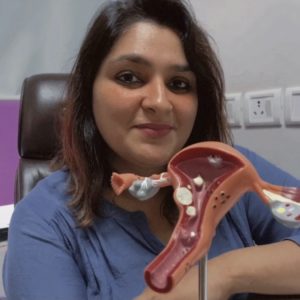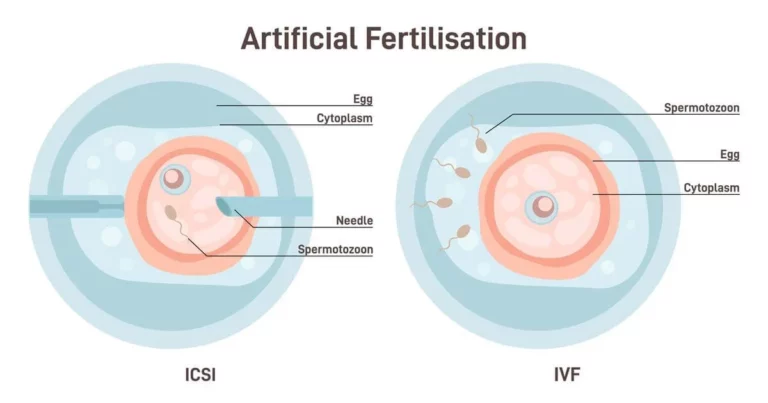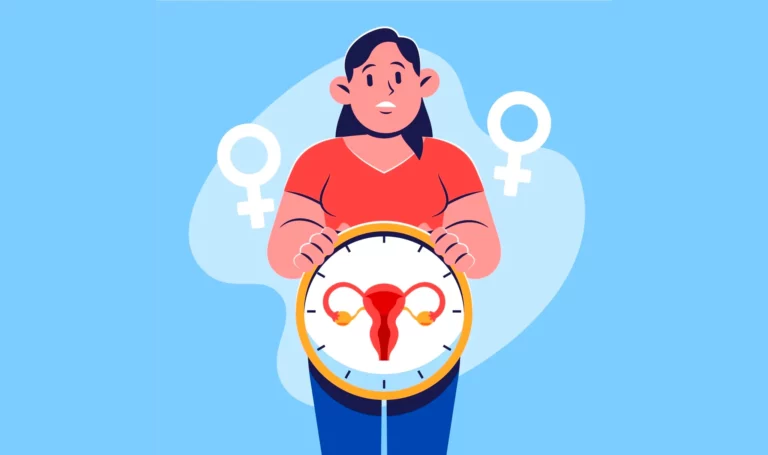Are you diagnosed with endometriosis or are you told by your obstetrician that you might be at risk? This article will help you understand the condition and how you can still manage to get pregnant with it, even naturally.
This article is a comprehensive guide that talks through endometriosis, how it affects female fertility, its common and uncommon symptoms, its causes, how it can be diagnosed, other alike conditions and how they are different, its treatments, possibility of prevention, how to get pregnant with it naturally, and some evidence-based proven treatments that could improve you pregnancy rate.
Increase your pregnancy chances with Nory Ovulation Kit
Endometriosis, an Overview
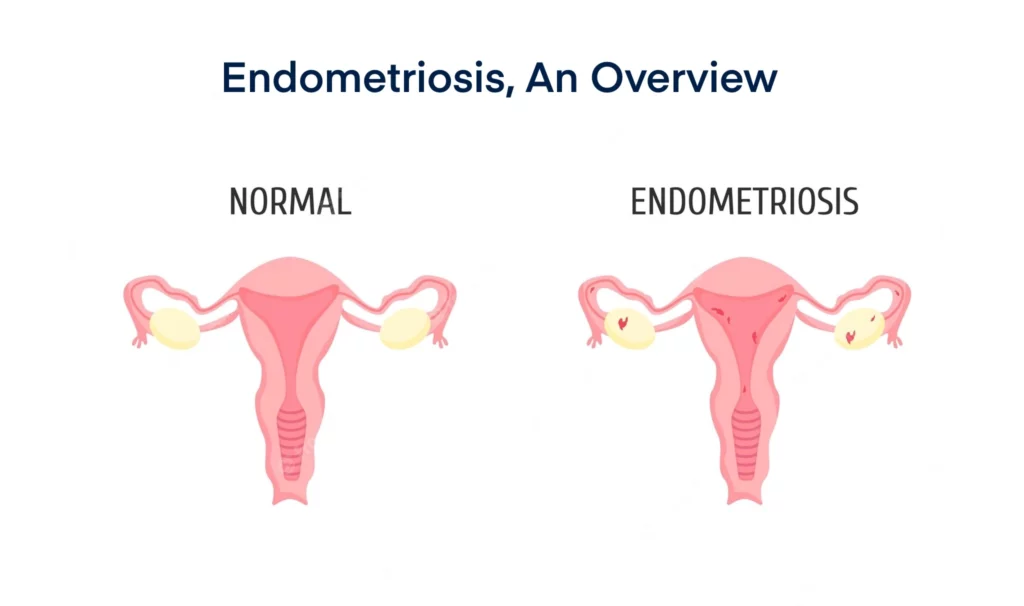
Endometrial tissue is a tissue that generally develops on the endometrium (the inner lining of the uterus). And, Endometriosis is the condition when this endometrial tissue abnormally develops outside the endometrium, instead of developing on it.
This condition is generally correlated with pelvic pain during periods. The person can also experience pain during intercourse, while urinating or during a bowel movement. If left untreated, these abnormal growths continue to thicken and divide, resulting in bleeding and severe pain during periods.
There is also a rare type of this condition which is quite difficult to diagnose, has no specific symptoms and is often misunderstood as some other condition such as tumors, sebaceous cysts, incisional hernia or abscess. It is called scar endometriosis, contributing to about 1% of overall cases. It is a condition when endometrial tissues develop on the scars caused by previous gynecological or obstetrical surgeries.
How Does Endometriosis Affect Fertility?
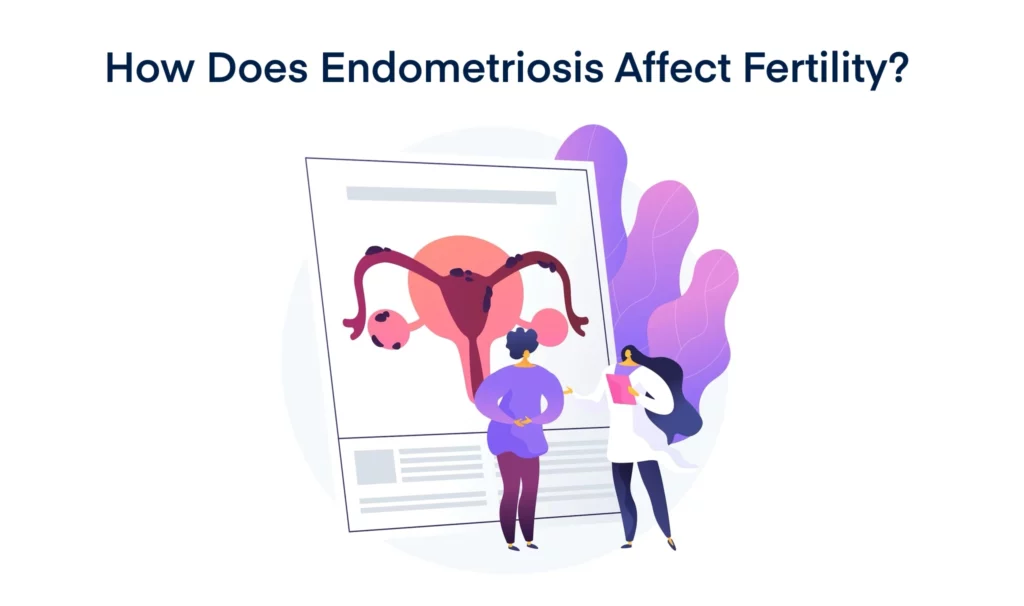
According to the statistics, it affects roughly 90 million women in their reproductive years worldwide. On a broader scale, the condition occurs in about 5-10% of all women around the world.
Up to 50% of the women who have this condition experience difficulty becoming pregnant. But, why is that?
The condition can disturb female fertility in several ways, such as by:
- Distorting the anatomy of the pelvis
- Causing adhesions
- Scarring or damaging the fallopian tubes
- Causing inflammation or infections in the pelvis area
- Affecting function of the immune system
- Triggering hormonal imbalances
- Impairing implantation of a fertilized egg, or
- Affecting egg quality
Therefore, if you are worried about your fertility, you can always check on the symptoms of the condition and talk to your gynecologist accordingly.
Endometriosis Symptoms
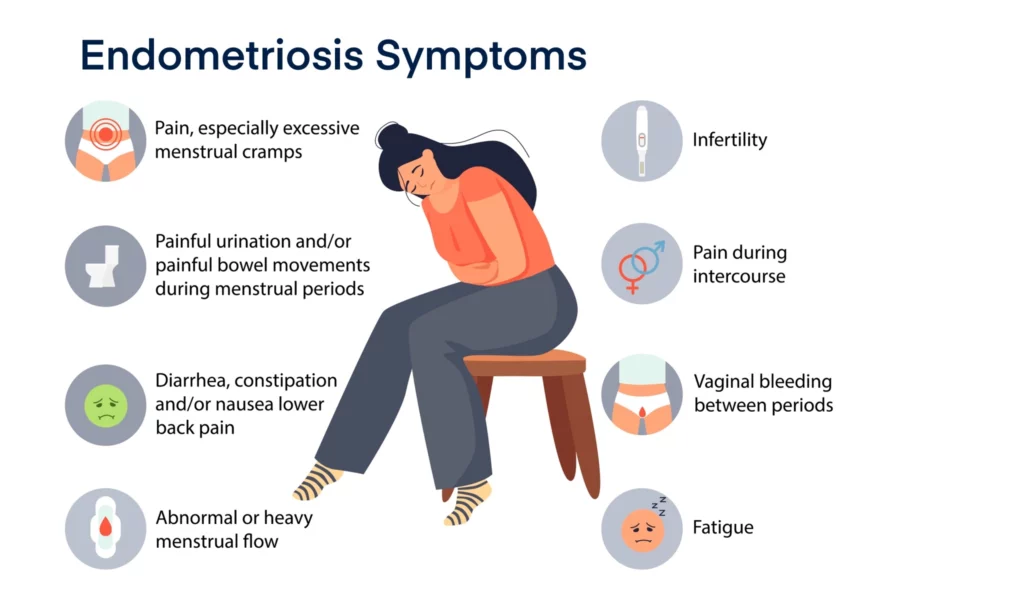
The condition is associated with several symptoms that may differ from person to person and depend on the severity of the condition. These include:
Common Symptoms of Endometriosis
- Pelvic pain during periods
- Pain during intercourse
- Pain while urinating
- Pain during bowel movements
- Heavy bleeding during periods
- Infertility
Uncommon Symptoms of Endometriosis
- Pain in lower back, groin or legs
- Severe pain during ovulation
- Acid reflux
- Persistent fatigue
- Constipation, diarrhea and bloating during periods
Endometriosis Causes

The definite cause of the condition is still not known. However, there are a couple of accepted theories that are believed as the possible causes of this condition. These include:
- Retrograde menstruation: Normally, blood flows to vagina during periods. Retrograde menstruation is when the blood starts to flow back to the pelvis through the fallopian tubes. This condition can cause cells similar to endometrial to collect, implant and grow outside the uterus.
- Hormonal metaplasia: Cells are present everywhere, inside and the outside of the uterus. Hormonal metaplasia is when hormonal changes trigger cells outside the uterus turn into endometrial cells.
- Surgical scarring: C-section surgeries leave scars that might cause leakage of period blood outside the uterus, increasing the odds of developing endometrial like-cells.
How is Endometriosis Diagnosed?
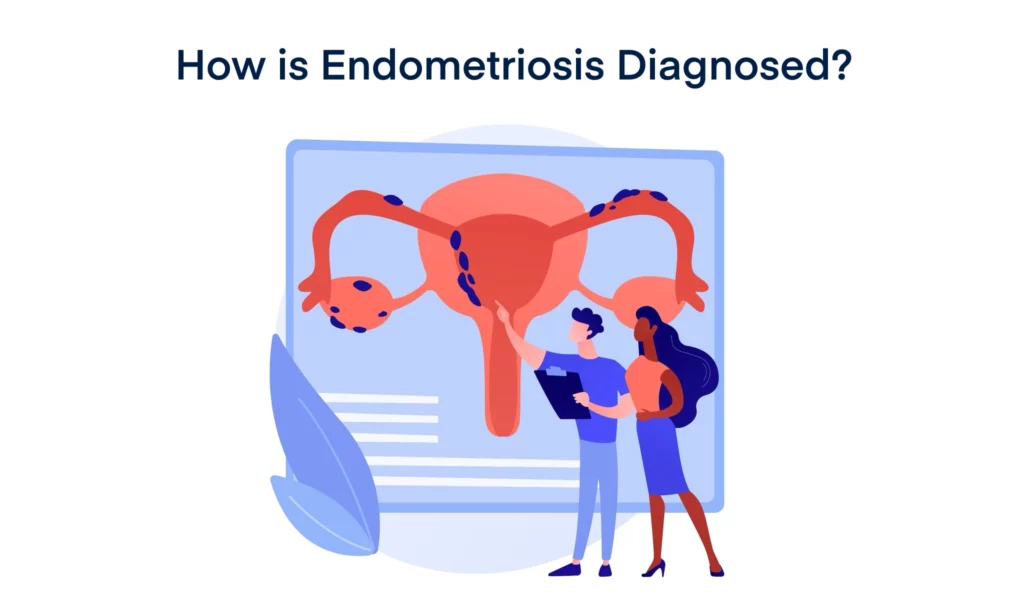
Doctors usually suspect this condition on the basis of its symptoms. If a person is found likely to have the underlying condition, the doctor may perform some of the following tests to confirm the condition.
- Pelvic Examination: At first, the doctor performs a physical pelvic examination where he will try to find out if he could feel cysts or scars at the back of the uterus.
- Imaging tests: Usually, when the pelvic examination could not confirm the presence of endometrial tissues outside the uterus, the doctor may recommend to perform imaging tests such as a transvaginal ultrasound, an abdominal ultrasound, a CT scan or an MRI to detect the condition.
- Laparoscopy: Laparoscopy is the most precise diagnostic test for diagnosing abnormal growth of endometrial tissue. It involves making a tiny cut and inserting a narrow tube attached with a small camera called a laparoscope into it to get detailed imaging of the pelvic area. The doctor could find endometrial cysts and confirm the condition.
- Biopsy: Biopsy is a post-procedure to laparoscopy. It involves collecting a sample during the laparoscopy procedure and performing microscopic analysis to confirm the condition.
Other Conditions Similar to Endometriosis and Their Effect on Fertility
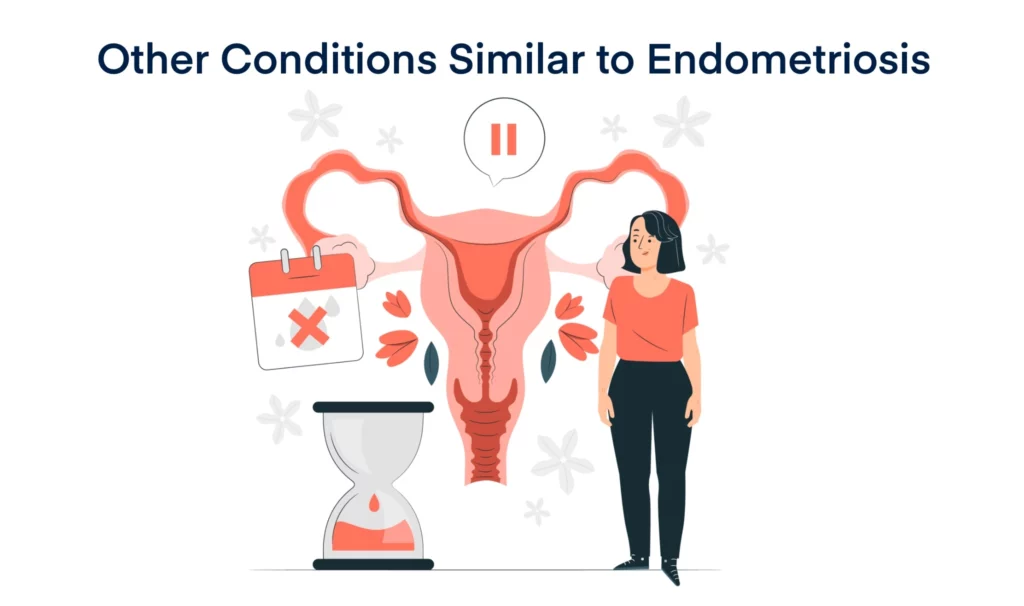
Diagnosis of endometriosis is often difficult due to some similar conditions that might affect the determination of the condition. Such conditions include:
Adenomyosis vs Endometriosis
Where endometriosis is the development of abnormal endometrial-like tissues outside the uterus, adenomyosis is a condition in which similar tissues to endometrial develop inside the wall of the uterus and cause enlargement. Both the conditions are somewhat identical, but the presence of abnormal tissues in a specific area of the uterus make them different. Symptoms and diagnosis of both the conditions are also quite similar.
Fibroids and Endometriosis
Fibroids are also abnormal development of muscle tissues (non-cancerous tumors) inside or outside the uterus. Fibroids have multiple types and share quite similar symptoms with the other condition.
Endometriosis and PCOS
PCOS (polycystic ovarian syndrome) is another condition that shares quite similar symptoms, diagnosis and treatment procedures. PCOS is when abnormal excessive growth of male hormone (androgen) causes small cysts on the ovaries that make the ovaries enlarged.
Endometriosis Treatments
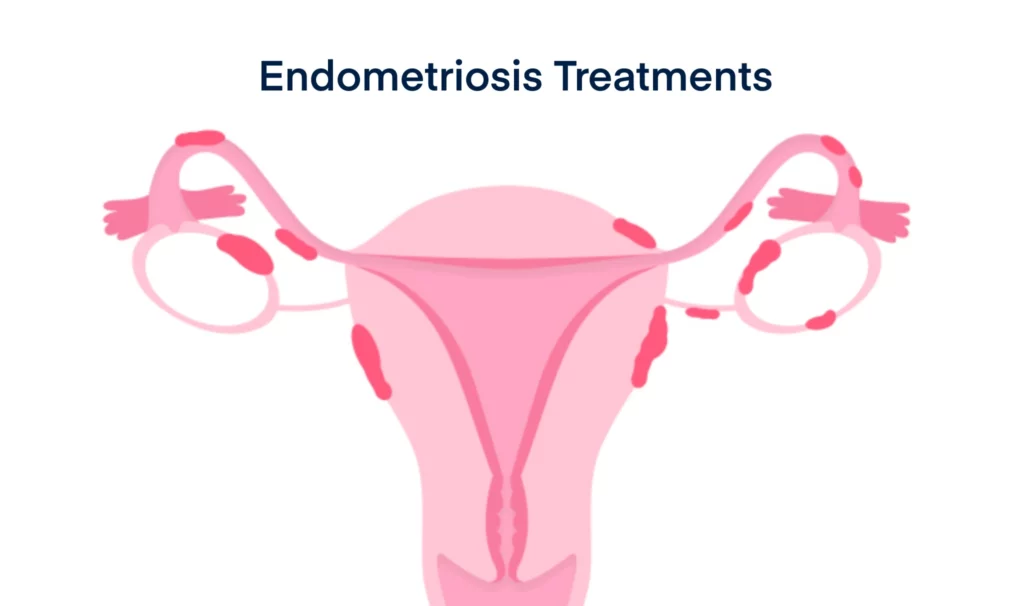
It is very unfortunate that there is no definite effective treatment available for the condition. However, its painful and discomforting symptoms can be managed. Female hormone (estrogen) is responsible for the growth of endometrial tissues. Taking birth control pills or other medicines that diminishes estrogen can be taken to improve pelvic pain.
Other than that, if you choose surgery for the removal of abnormal endometrial tissues, your doctor will remove them and this might reinstate your pelvic anatomy and improve your chances of pregnancy. However, birth control pills or other estrogen-blockers will not improve pregnancy chances. If you would want to become pregnant with endometriosis, you will need to consider undergoing in-vitro fertilization (IVF) procedure.
Can You Prevent Endometriosis?
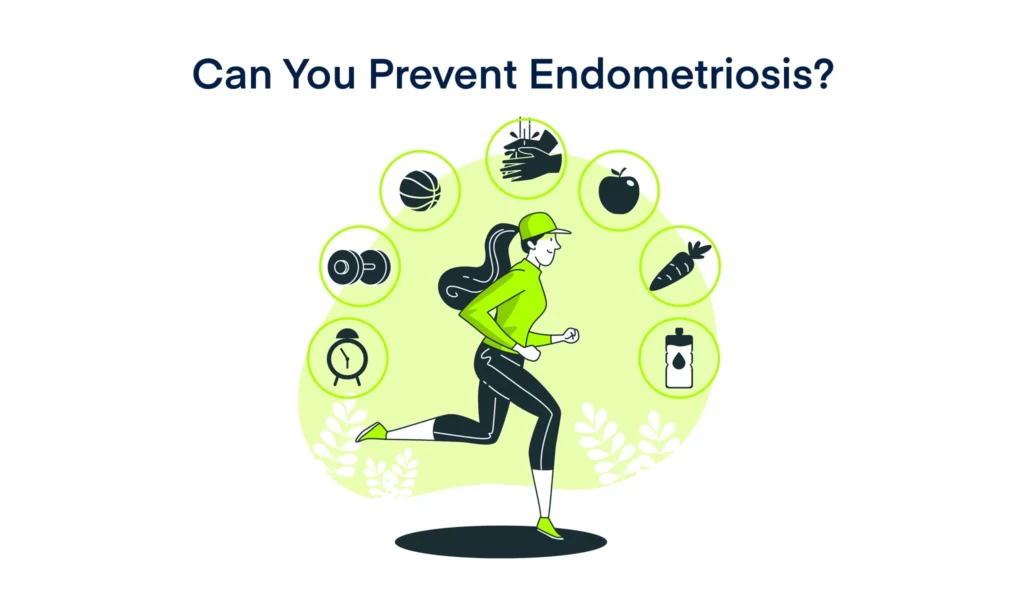
When the condition is caused by surgical scarring or retrograde menstruation, it cannot be prevented. But when it is induced by hormonal metaplasia, it can be managed by making the right lifestyle changes.
Get your diet in check, get into some physical activities, avoid hormone-altering substances such as smoking cigarettes, drinking caffeine, drinking alcohol and taking recreational drugs. With the right changes, the condition may improve on its own and its chances of recurrence may minimize.
How to Get Pregnant with Endometriosis Naturally?
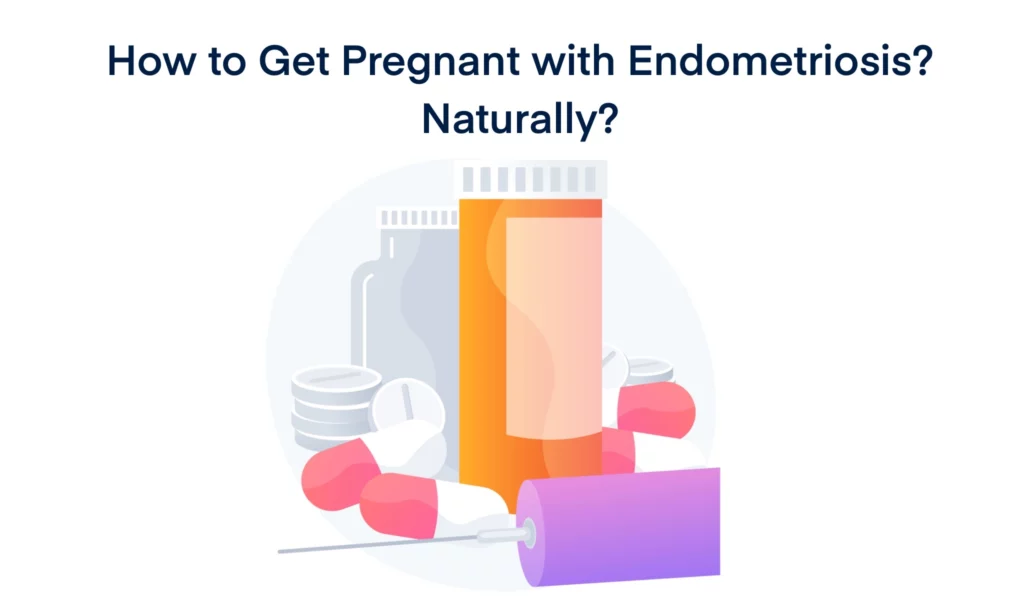
Yes, it is possible to still be able to conceive with the presence of this condition. But, it will have a very low birth success rate in cases that are severe and influence pelvic anatomy, reproductive function, ovulation, egg quality and embryo implantation. However, females with mild or moderate cases can still get pregnant naturally with endometriosis. A couple of lifestyle changes and few fertility medicines and obstetric care will get you to have your own child even after undergoing such a condition.
Always try to discuss your symptoms as soon as possible so the condition could be managed in its earlier stage. However, if the condition has become severe, there are a few clinical pregnancy treatments that would help.
Clinical Treatments to Get Pregnant with Endometriosis
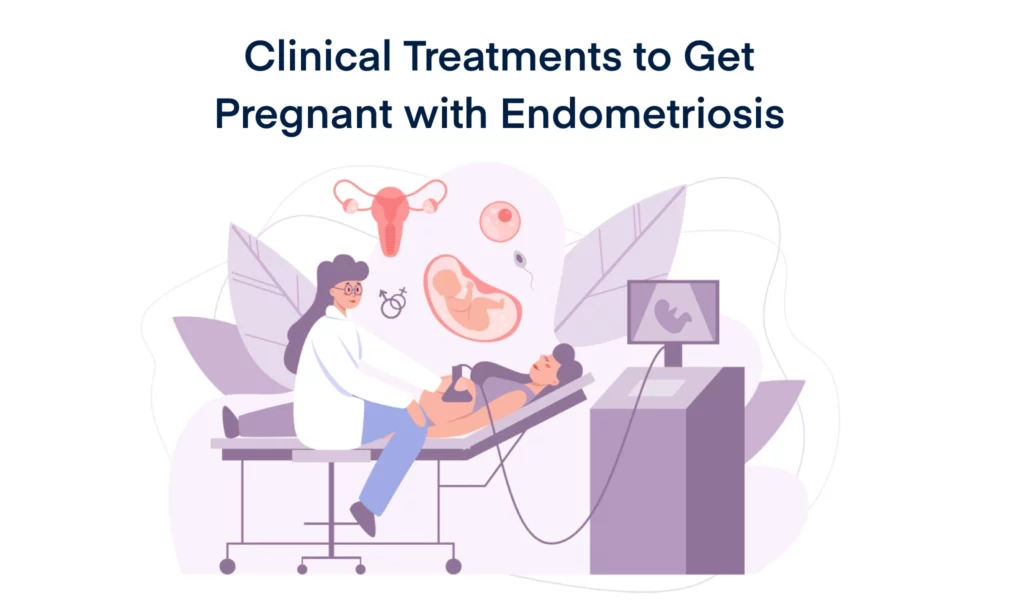
As we discussed how this condition affects female fertility, it is important to understand that any evidence-based proven treatment that bypasses the anatomical and functional alternation the condition causes might improve the chance of pregnancy.
Even if you become pregnant with endometriosis naturally, there are high chances of the pregnancy to result in a miscarriage, ectopic pregnancy, low birth weight, premature birth, or birth defects. However a doctor will always recommend that you try to conceive naturally for about 6 months first, if your attempt turns out unsuccessful, you will be advised IVF or intrauterine insemination IUI.
- IUI: In early stages such as mild or moderate, IUI is the recommended pregnancy procedure along with clomiphene and gonadotropin fertility-drugs administration.
- IVF: Usually when IUI does not even induce conception, your doctor will recommend undergoing IVF. Because most severe cases provoke poor egg quality and implantation issues, IVF becomes the perfect pregnancy treatment.
The Bottom Line
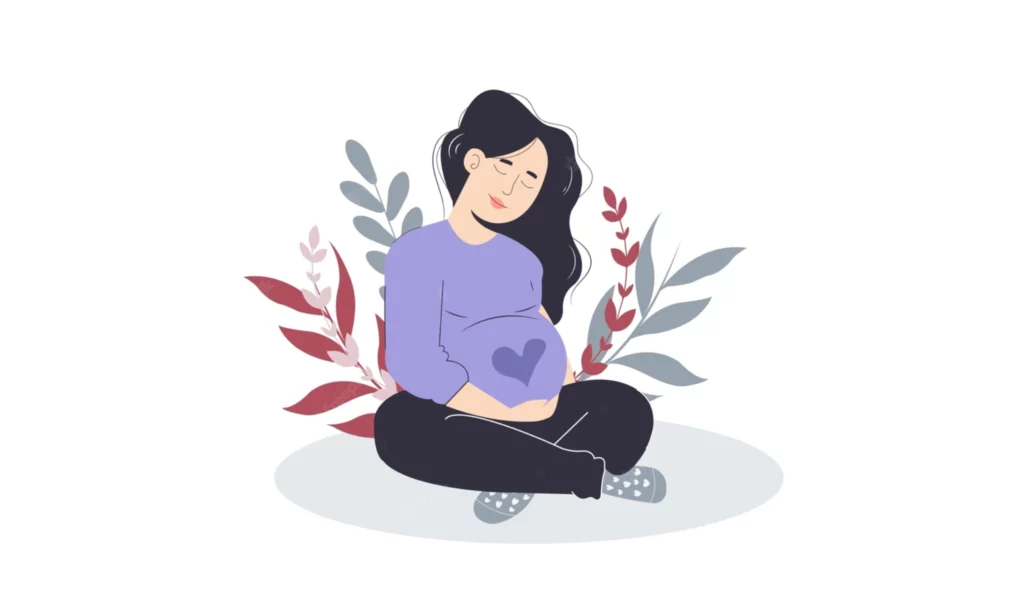
Endometriosis is more common than you think it is. About 50% of women who have this condition, about 45 million women worldwide, experience difficulty getting pregnant.
And, if you are wanting to get pregnant with this condition, naturally, you will require to get it diagnosed as early as possible. In most cases, when the condition is mild or moderate, a few medicines and lifestyle improvements will get pregnant naturally. However, if your doctor diagnoses the condition at its severe stage, you may need to look for clinical treatments to get pregnant.

